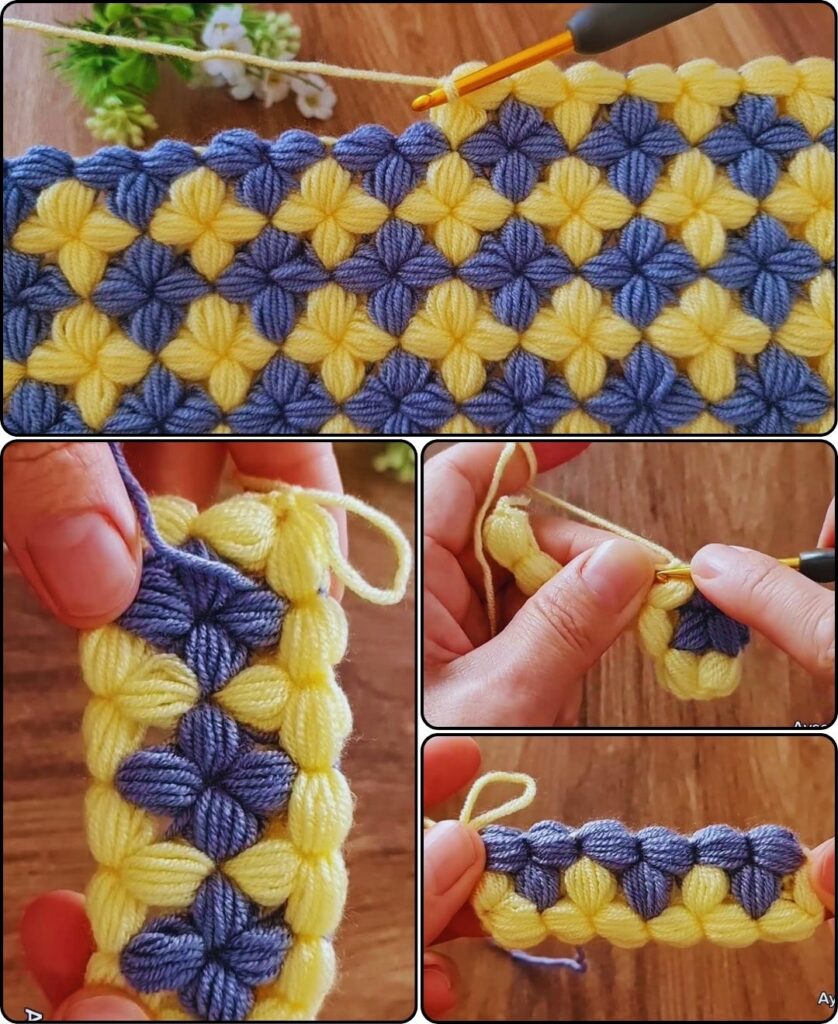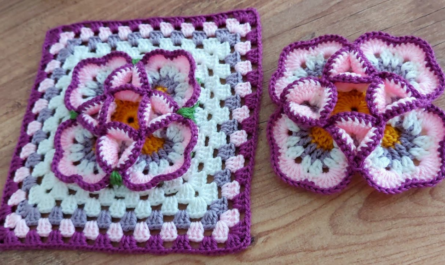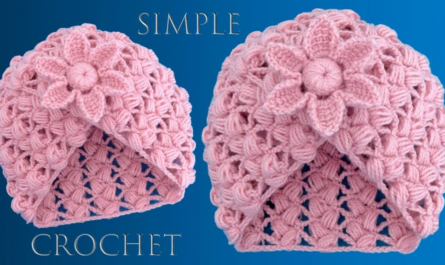It sounds like you’re looking for a guide to creating a beautiful crochet baby blanket with a focus on stitch patterns! While I can’t physically show you how to crochet, I can definitely provide a detailed breakdown of patterns, techniques, and considerations to help you design and make a stunning blanket.
Here’s a comprehensive guide to creating beautiful crochet stitches for a baby blanket:

Understanding the “Beautiful” in a Baby Blanket Stitch
For a baby blanket, “beautiful” often translates to:
- Softness: Gentle against delicate skin.
- Texture: Interesting to touch and look at, but not too “holey” or snag-prone.
- Drape: Lies nicely without being too stiff.
- Security: Not too many large gaps where tiny fingers or toes could get caught.
- Washability: Needs to withstand frequent washing.
- Aesthetics: Visually appealing in terms of color, design, and overall look.
Key Considerations Before You Start
- Yarn Choice is Paramount:
- Fiber: Acrylic is very popular for baby blankets due to its softness, durability, affordability, and washability. Cotton blends are also excellent, offering breathability. Avoid wools unless they are superwash and known to be very soft (some can be scratchy for babies).
- Weight: Light worsted (DK/8-ply) or worsted (aran/10-ply) are common. Finer weights like sport (5-ply) can create a more delicate look but will take longer. Chunky yarns work up fast but might be too heavy for a baby.
- Color: Pastels are classic, but vibrant colors can also be lovely. Consider gender-neutral options if it’s a gift before the baby’s arrival. Variegated yarns can create interesting patterns with simple stitches.
- Hook Size: Choose a hook size appropriate for your chosen yarn weight. The yarn label will usually recommend a size. A slightly larger hook than recommended can create a softer, more pliable fabric.
- Gauge (Swatch!): Always make a small swatch (e.g., 4×4 inches) to check your tension and see how the stitch pattern looks with your yarn and hook. This helps ensure your blanket will be the desired size and have the right drape.
- Blanket Size: Common baby blanket sizes:
- Lovey/Security Blanket: 12″ x 12″ to 18″ x 18″
- Stroller/Car Seat Blanket: 24″ x 30″ to 30″ x 36″
- Receiving Blanket: 36″ x 36″ to 40″ x 40″
- Crib Blanket: 36″ x 48″ to 42″ x 52″

Beautiful Crochet Stitch Patterns for Baby Blankets
Here are several stitch patterns, ranging from beginner-friendly to slightly more intricate, that are excellent for baby blankets. I’ll explain each in detail.
I. Beginner-Friendly & Classic Stitches
These stitches are simple, create a lovely fabric, and are great for showcasing beautiful yarn.
1. Single Crochet (SC) Fabric: * How to: Work SC stitches in rows. * Appearance: Dense, sturdy, and slightly textured. It creates a solid fabric with minimal holes, making it very safe for babies. * Pros: Very easy for beginners, great for learning tension, extremely durable. * Cons: Can be a bit stiff if tension is too tight, takes longer to grow than taller stitches. * Tip: Work into the back loop only (BLO) for a ribbed effect, or alternate front loop (FLO) and BLO for a more interesting texture.
2. Half Double Crochet (HDC) Fabric: * How to: Work HDC stitches in rows. * Appearance: Creates a fabric denser than DC but looser than SC. It has a nice drape and a subtle texture. * Pros: Works up faster than SC, good balance of density and drape, relatively easy. * Cons: Can have a slight lean to the stitches if tension is inconsistent. * Tip: Try working HDC into the third loop (the horizontal bar behind the V of the stitch) for a knit-like appearance.
3. Double Crochet (DC) Fabric: * How to: Work DC stitches in rows. * Appearance: A more open and lacy fabric than SC or HDC. It works up quickly. * Pros: Fast to crochet, good drape. * Cons: Can be a bit too “holey” for very small babies if worked loosely. * Tip: Combine with SC or HDC rows for varying textures or use a smaller hook for a denser fabric.
4. Granny Stripe Stitch: * How to: Similar to a granny square, but worked in rows. * Chain a multiple of 3 + 2. * Row 1: DC in 3rd ch from hook, 2 DC in same ch. Skip 2 ch, 3 DC in next ch. Repeat across. Ch 2, turn. * Row 2: 3 DC in first space between 3-DC clusters. 3 DC in next space. Repeat across. Ch 2, turn. * Change colors every 1 or 2 rows for a striped effect. * Appearance: Classic, charming, slightly lacy. The clusters create a lovely texture. * Pros: Visually appealing, good for using up scraps, relatively quick. * Cons: Can have some small gaps. * Tip: Use self-striping yarn for an easy color change effect.
5. Moss Stitch (Linen Stitch / Granite Stitch): * How to: Alternating SC and ch 1. * Chain an even number. * Row 1: SC in 2nd ch from hook, ch 1, skip 1 ch, SC in next ch. Repeat across. Ch 1, turn. * Row 2: SC in first ch-1 space, ch 1, skip SC, SC in next ch-1 space. Repeat across. Ch 1, turn. * Appearance: Dense, flat, and wonderfully textured with a subtle woven look. Minimal holes. * Pros: Very soft drape, looks sophisticated, great for showcasing variegated yarn, easy to memorize. * Cons: Can be slower than taller stitches. * Tip: This stitch is extremely forgiving and creates a lovely, squishy fabric perfect for babies.
II. Textured & Interesting Stitches
These stitches add more visual and tactile appeal to your blanket.
6. Bobble Stitch / Popcorn Stitch / Puff Stitch: * How to: These are similar but distinct stitches that create raised “bumps” on one side of the fabric. * Bobble: Made with 5 DC stitches worked into the same stitch, then crocheted together at the top. * Popcorn: Made with 5 DC stitches worked into the same stitch, then slip stitched into the top of the first DC to close the puff. * Puff: Made by yarn over, insert hook, pull up a loop (repeat 3-5 times), then yarn over and pull through all loops. * Appearance: Creates a fun, bumpy texture. * Pros: Very tactile and visually appealing, adds interest. * Cons: Uses more yarn, can create small gaps around the bobble if not careful, can be a bit more time-consuming. * Pattern Idea: Use bobbles sparingly, perhaps in rows alternating with SC or HDC, or as a border. You can also create shapes or letters with bobbles.
7. Ripple Stitch (Chevron Stitch): * How to: Created by alternating increases and decreases over a certain number of stitches (e.g., DC 2 Together, DC in several stitches, 3 DC in one stitch for a peak, repeat). * Appearance: Iconic zig-zag pattern. Can be created in a single color or multiple colors for striking stripes. * Pros: Visually dynamic, works up quickly. * Cons: Can be tricky to get the foundation chain and first row right, edges can be wavy (though a border can fix this). * Tip: Practice the stitch repeat before committing to a full blanket. Count carefully! Using a larger hook than recommended for the yarn can help with the drape and prevent stiffness.
8. Basketweave Stitch: * How to: Achieved by alternating front post double crochet (FPDC) and back post double crochet (BPDC) stitches in blocks. * Appearance: Creates a woven, textured look reminiscent of a basket. * Pros: Beautiful, dense, and warm fabric. * Cons: Uses a lot of yarn, can be slow, more advanced technique. * Tip: Ensure you have a good understanding of FPDC and BPDC before attempting this for a large project.
9. V-Stitch: * How to: (DC, ch 1, DC) in the same stitch or space. * Appearance: Creates an open, lacy, V-shaped pattern. * Pros: Works up very quickly, creates a lovely drape. * Cons: More open than other stitches, so consider the yarn weight carefully for a baby blanket. * Tip: Can be combined with solid rows (e.g., HDC or SC) for a mixed texture blanket.
10. Shell Stitch: * How to: Multiple DC stitches (e.g., 5 DC) worked into the same stitch or space, often skipped stitches in between. * Appearance: Creates lovely, fan-like “shells” that give a scalloped or wavy look. * Pros: Very pretty and decorative, creates a soft fabric. * Cons: Can be slightly lacy, uses more yarn than basic stitches. * Tip: Excellent for borders or as the main body stitch. Can be done in single or multiple colors.

Designing Your Blanket: Patterns & Layouts
Once you choose your stitch(es), consider these layout patterns:
- Solid Block: One stitch, one color. Simple and elegant.
- Stripes: Change colors every few rows.
- Even stripes (e.g., 2 rows of color A, 2 rows of color B).
- Varying stripe widths.
- Ombre effect (gradual color change from light to dark).
- Color Blocks: Work large sections in different solid colors.
- Stitch Repeats: Alternate between two or more stitch patterns (e.g., 5 rows of HDC, 3 rows of Moss Stitch, repeat).
- Panel Blanket: Crochet individual panels with different stitches or colors, then seam them together.
- Granny Square Blanket: Make multiple granny squares (or other motifs) and join them. This is a classic and very popular choice for baby blankets.
Essential Finishing Touches
- Weaving in Ends: Crucial for a neat and durable blanket. Weave in securely!
- Blocking (Optional but Recommended):
- What it is: Wetting or steaming your finished crochet piece and shaping it to its desired dimensions.
- Why for Baby Blankets: Softens the yarn, evens out stitches, opens up lacier patterns, and gives a professional finish. Acrylic yarn responds well to steam blocking (hovering a steam iron over it, not touching).
- Borders: A border can beautifully frame your blanket and tidy up the edges.
- Simple Borders: SC or HDC around the edge.
- Decorative Borders:
- Scalloped Border: A repeat of (SC, skip 1, 5 DC in next, skip 1) or similar.
- Picot Border: SC, then (ch 3, slip stitch in 3rd ch from hook), repeat.
- Shell Stitch Border: As described above.
- Crab Stitch (Reverse SC): Creates a rope-like edge.
Tips for Success
- Take Breaks: Crochet can be tough on your hands. Rest often.
- Count Your Stitches: Especially important at the beginning and end of rows to ensure your blanket remains straight. Stitch markers are your friends!
- Read the Pattern Carefully: If you’re following a pattern, read through it entirely before you start.
- Don’t Be Afraid to Undo: If you make a mistake, it’s always better to frog (unravel) a few rows than to continue with an error.
- Enjoy the Process: Crocheting is a relaxing and rewarding craft!
By carefully considering your yarn, hook, stitch patterns, and finishing techniques, you can create a truly beautiful, unique, and cherished crochet baby blanket. Happy crocheting!



